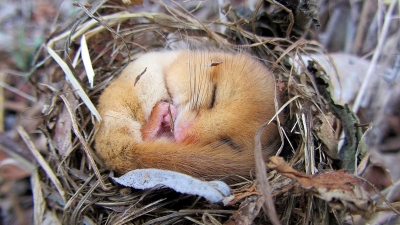
Hibernation is a way for many creatures – from butterflies to bats – to survive cold, dark winters without having to forage for food or migrate to somewhere warmer. Instead, they turn down their metabolisms to save energy.
Animals in hot climates also undergo a form of hibernation called aestivation. This works in a similar way and enables them to survive extreme heat, drought or lack of food.
Hibernating is much more profound than simply sleeping, though. Depending on the species, it can vary from long, deep unconsciousness to light spells of inactivity.
Small mammals, such as chipmunks, dormice, hamsters, hedgehogs and bats hibernate. Also, many insects, amphibians and reptiles hibernate
Just one bird is known to be a true hibernator: North America’s common poorwill. This beautifully camouflaged nocturnal bird is a relative of the nightjar found in Britain, and in winter often hibernates among rocks. It can slash its oxygen intake by 90%, while its body temperature plummets to 5°C, barely registering signs of life.
A hibernating animal’s metabolism slows and its temperature plunges – in ground squirrels it can fall to -2°C. Breathing slows and, in bats, the heart rate can fall from 400 to 11 beats per minute. Some cold-blooded animals, such as wood frogs, produce natural antifreezes to survive being frozen solid.
Credit : Discover wildlife
Picture Credit : Google




